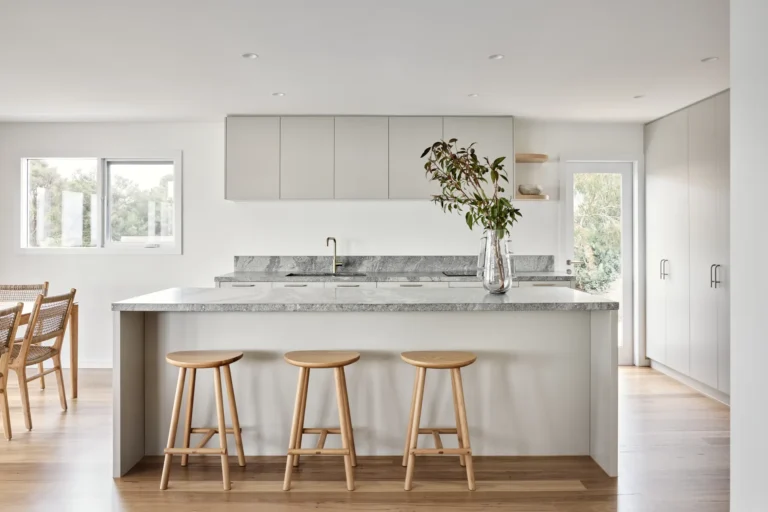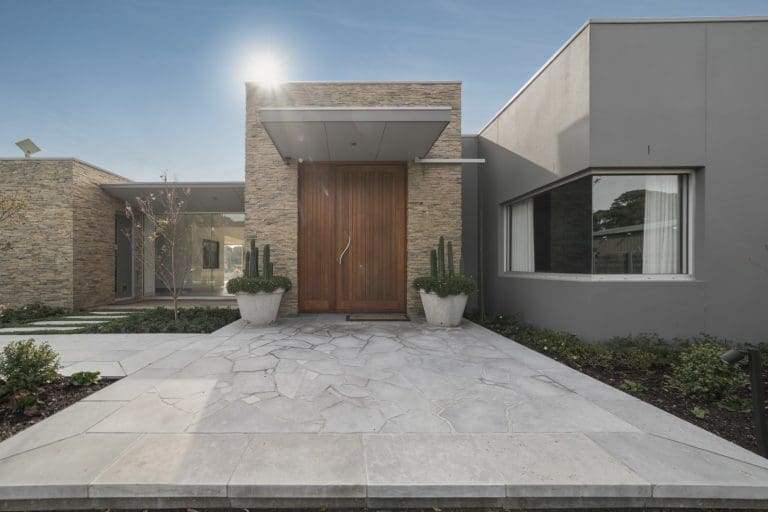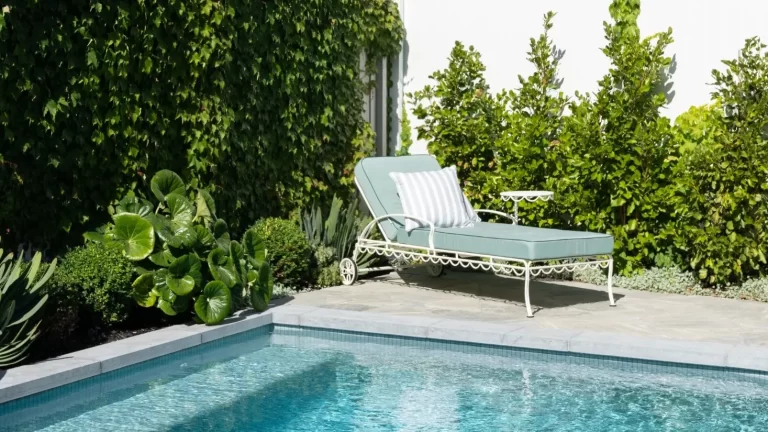Marble has long been prized for its timeless beauty, strength, and versatility. Whether featured in grand architectural landmarks or modern Australian homes, this natural stone continues to stand the test of time. At RMS Traders, we believe understanding the origins, characteristics, and applications of marble is key to choosing the right finish for your space. In this guide, we’ll explore everything you need to know about marble, from its geological formation to popular types and practical uses, including why marble tiles remain a popular choice for both residential and commercial projects.

What is Marble?
Marble is a metamorphic rock formed when limestone is subjected to intense heat and pressure over time, typically deep within the Earth’s crust. This process, known as metamorphism, causes the calcite minerals in the limestone to recrystallise, resulting in a denser rock with distinctive veining and a smooth, often polished surface. The colour and pattern variations seen in marble are due to impurities such as clay, silt, sand, or iron oxides present during its formation.
These unique features give each slab its own character, making marble a highly sought-after material for architectural design, sculpture, and interior finishes. Renowned for its elegance and durability, marble has been used throughout history in iconic buildings and artworks, and today remains a premium choice for flooring, benchtops, wall cladding, and especially marble tiles in both traditional and contemporary spaces.
As we explored in our previous article on Marble Kitchen Trends 2025, this timeless natural stone continues to attract a strong following for its elegance and versatility.
Facts About Marble
- Marble is a natural stone formed from limestone through heat and pressure.
- Each piece of marble is unique, with its own veining and colour variations.
- It has been used in architecture and sculpture for thousands of years.
- Famous structures like the Taj Mahal and Michelangelo’s David are made of marble.
- Marble is available in a wide range of colours, including white, black, green, pink, and gold.
- It is commonly used for flooring, benchtops, tiles, and decorative features.
- Marble is porous and needs sealing to protect it from stains and etching.
- Carrara, Calacatta, and Statuario are some of the most popular types of marble.
- Polished marble has a shiny, reflective surface, while honed marble has a matte finish.
- Marble is both a luxury and timeless material that suits traditional and modern designs.
Understanding the Minerals, Colours, and Varieties of Marble


Marble, although known for its elegance and uniform appearance, often contains a complex blend of minerals that give each slab its unique character. These minerals are not originally part of pure limestone but are present as natural impurities, often introduced through clay, quartz, or iron-rich compounds.
When limestone undergoes metamorphism, these impurities react to form new minerals such as diopside (which can appear white or pale green), tremolite, actinolite, and various types of feldspar like albite, labradorite, or anorthite.
Other accessory minerals might include garnet, spinel, forsterite, talc, chlorite, tourmaline, and even traces of metallic elements like pyrrhotite or chalcopyrite. These minerals are responsible for the wide spectrum of colours found in marble from soft greens and deep browns to golden hues and dramatic blacks.
The coloration of marble is largely influenced by these secondary minerals. For example, green hues often come from the presence of pyroxenes and amphiboles, while browns may indicate garnet or vesuvianite. Yellows can suggest minerals like epidote or titanite, and grays or blacks may come from fine particles of graphite. Sometimes, the original sedimentary layers of the limestone are still visible as subtle mineral banding, adding to the stone’s visual appeal.
Marble isn’t always uniform in texture or appearance. In many deposits, you’ll find bands or patches of calc-silicate rock alternating with marble, creating naturally decorative patterns. However, due to the varying hardness of the minerals involved, these types of marble can be challenging to cut and finish. Over time, additional physical changes such as tectonic movement or chemical weathering can lead to striking varieties like brecciated marble, which features dramatic veining from calcite-filled cracks, or verd antique marble, a green-hued stone formed from minerals like serpentine, forsterite, and diopside.
It’s also important to distinguish true marble from materials commonly referred to as “onyx marble.” These are actually formed through the layering of calcite or aragonite in caves or around spring outlets and are not geologically classified as marble or true onyx. These stones often appear in yellow or brown tones due to iron content and were historically called alabaster. Notable examples include giallo antico from Italy, the Siena marble of Tuscany, and the famous onyx marbles from Mexico, California, and Algeria.
In addition to metamorphosed marble, some limestones that haven’t undergone metamorphism are also prized in architecture due to their fossils and natural colour contrasts. Examples include the fossil-rich “madrepore marble” of Great Britain, the shell-filled Purbeck Beds limestone, and the Sussex marble all popular during the medieval period and still visible in iconic buildings like Westminster Abbey. Even black limestones like Belgium’s “petit granit,” containing ancient marine fossils, are often classified and used as decorative marble.
From its hidden mineral complexity to its extraordinary range of colours and patterns, marble is far more than a decorative surface, it’s a geological history book written in stone.
Whether you’re choosing marble tiles for a modern kitchen, selecting marble bathroom tiles to create a spa-like retreat, or admiring the intricate carvings of an ancient cathedral, the story behind the stone adds depth to its beauty and connects your space to centuries of architectural tradition.
Marble by Colour & Pattern
How many types of marble are there?
- White Marble
- Carrara Marble (Italy): Light grey veins on a white background; classic and elegant.
- Calacatta Marble (Italy): Thicker, dramatic veining; more luxurious than Carrara.
- Statuario Marble (Italy): Brilliant white with bold, dark grey veins.
- Volakas Marble (Greece): White base with lilac or light grey veining.
- Carrara Marble (Italy): Light grey veins on a white background; classic and elegant.
- Black Marble
- Nero Marquina (Spain): Deep black with sharp white veining.
- Belgian Black Marble (Petit Granit): Fossil-rich, dark limestone often used as decorative black marble.
- Nero Marquina (Spain): Deep black with sharp white veining.
- Green Marble
- Verde Alpi (Italy): Dark green with white veins; often used in classic interiors.
- Indian Green Marble (India): Rich green with lighter or white veining.
- Verde Alpi (Italy): Dark green with white veins; often used in classic interiors.
- Grey Marble
- Pietra Grey (Iran): Dark grey with fine white veins.
- Grigio Carnico (Italy): Charcoal base with lighter veining.
- Pietra Grey (Iran): Dark grey with fine white veins.
- Brown and Beige Marble
- Emperador Marble (Spain/Turkey): Available in Dark and Light variations with cream or white veins.
- Crema Marfil (Spain): Warm beige with soft, uniform veining.
- Emperador Marble (Spain/Turkey): Available in Dark and Light variations with cream or white veins.
- Pink & Red Marble
- Rosa Portugués (Portugal): Soft pink with grey/cream veining.
- Rosso Levanto (Italy): Burgundy red with white veining.
- Norwegian Rose (Norway): Unique dusty pinks and greens.
- Rosa Portugués (Portugal): Soft pink with grey/cream veining.
- Yellow & Gold Marble
- Giallo Siena (Italy): Golden-yellow base with reddish veins.
- Giallo Antico (Tunisia/Italy): Antique yellow with fossil-like patterns.
- Giallo Siena (Italy): Golden-yellow base with reddish veins.
- Blue Marble
- Azul Macaubas (Brazil): Rare, vibrant blue marble with striking veining.
- Sodalite Blue (Bolivia/Namibia): Deep blue with white veining; semi-precious appearance.
- Azul Macaubas (Brazil): Rare, vibrant blue marble with striking veining.

Marble By Geological Features or Speciality
How many types of marble are there based on geological features or specialty?
- Breccia Marble
Formed from angular marble fragments cemented together by calcite; bold and dramatic.
- Breccia Oniciata
- Breccia Pernice
- Fossiliferous Marble (or Decorative Limestone)
- Includes ancient marine fossils or shell fragments (e.g. “madrepore marble” or “encrinital marble” from the UK).
- Includes ancient marine fossils or shell fragments (e.g. “madrepore marble” or “encrinital marble” from the UK).
- Verd Antique / Ophicalcite
- Not true marble, but a mixture of serpentine and calcite deep green with white veining.
- Not true marble, but a mixture of serpentine and calcite deep green with white veining.
- Onyx Marble (Travertine-Onyx)
- Layered calcite or aragonite formed in caves; used like marble but technically different.
- Layered calcite or aragonite formed in caves; used like marble but technically different.
Marble By Region | Popular Varieties
- Italy: Carrara, Calacatta, Statuario, Rosso Verona, Giallo Siena
- Greece: Volakas, Thassos (bright white)
- Spain: Nero Marquina, Crema Marfil, Emperador
- Turkey: Mugla White, Burdur Beige, Marmara
- India: Makrana (used in the Taj Mahal), Bidasar, Green Marble
- Brazil: Azul Macaubas, Botanic Green
- Iran: Pietra Grey, Spider Marble
Elements and Principles of Sculptural Design in Marble
Sculpting with marble is both an art and a science. The natural properties of the stone, its weight, grain, colour, and veining, directly influence how artists approach their designs. Mastering marble as a medium requires an understanding of key elements and principles of sculptural design, many of which have guided marble sculptors since antiquity.
Marble Form:
In sculpture, form refers to the three-dimensional shape of the work. Marble allows for crisp edges, subtle curves, and a wide range of volumetric forms, from realistic human figures to abstract shapes.
Marble Texture:
Marble’s texture can range from polished and smooth to rough and chiselled. Sculptors intentionally manipulate texture to add visual interest or contrast different surfaces (e.g., skin vs. drapery in classical sculpture).
Marble Line:
Lines guide the viewer’s eye across a sculpture. In marble, lines can be literal (etched or carved) or implied through the contours and flow of the form.
Marble Space:
This refers to the relationship between the sculpture and its surroundings. Sculptors consider positive space (the marble itself) and negative space (the carved-out areas) to create depth and movement.
Colour and Veining:
While marble is typically associated with white stone, many varieties include dramatic veining or coloration. Sculptors often choose marble with specific veining to highlight or enhance certain features of the piece.
Scale and Proportion:
These elements govern the size of the sculpture and the relationship between its parts. Marble’s strength allows for both monumental works and delicate details without compromising structural integrity.
Marble Finishes Explained: Honed vs. Polished vs. Tumbled

Marble’s finish can dramatically influence both its appearance and functionality. Whether you’re selecting marble tiles for a kitchen splashback, a luxurious bathroom, or a statement hallway floor, understanding the differences between finishes will help you choose the right look and performance for your space.
Polished Marble
Polished marble is buffed to a high-gloss finish that enhances the stone’s natural colour and veining. This mirror-like surface gives a sleek, refined look, ideal for formal spaces like foyers or elegant benchtops.
- Best for: Wall cladding, benchtops, low-traffic floors, and feature areas
- Pros: Reflective surface, vibrant colour, easy to clean
- Cons: Can be slippery when wet, especially on floors
Honed Marble
Honed marble has a matte or satin finish, achieved by grinding the surface to a smooth, flat texture without polishing it to a shine. This finish creates a more subtle, natural look while still feeling luxurious.
- Best for: Bathroom floors, kitchen splashbacks, high-traffic areas
- Pros: Slip-resistant, hides scratches and etching better than polished
- Cons: May appear slightly duller and can stain more easily if not sealed
Tumbled Marble
Tumbled marble is lightly weathered using abrasives to create a softer, aged appearance with rounded edges and a slightly textured surface. This finish adds warmth and character, making it perfect for rustic or traditional design schemes.
- Best for: Outdoor areas, shower floors, decorative borders
- Pros: Antique, tactile look; excellent grip underfoot
- Cons: More porous; surface may trap dirt if not sealed properly


The History of Marble in Architecture
Marble has been a symbol of luxury, permanence, and artistry for thousands of years. Its use in architecture dates back to ancient civilisations, where it was prized not only for its strength and durability but also for its beauty and workability. From iconic temples to modern interiors, marble has left an indelible mark on the built environment.
Ancient Civilisations
The story of marble in architecture begins in ancient Egypt, where early builders used it for decorative elements in tombs and temples. However, it was the Greeks who truly elevated marble to architectural prominence. Structures like the Parthenon in Athens, built in the 5th century BCE, were constructed almost entirely of marble, chosen for its light-reflecting properties and ability to be finely carved.
The Romans expanded on this tradition, sourcing marble from across their empire. They developed advanced quarrying techniques and used marble extensively in monumental architecture, from the Pantheon and Roman baths to intricate mosaics and columns. Carrara marble from Italy became especially famous during this period, valued for its purity and brilliant white tone.
The Renaissance and Beyond
During the Renaissance, marble was reborn as the material of choice for artists and architects alike. Masters like Michelangelo used it not only for sculpture but also for building design. Cathedrals, palaces, and civic buildings were clad in rich varieties of marble, showcasing the wealth and artistic ambition of their patrons.
In the centuries that followed, marble continued to be associated with elegance and grandeur. Baroque and Neoclassical architects incorporated marble into their designs for everything from ornate staircases to dramatic facades. Advances in transport and cutting technologies allowed marble to be used more widely in interiors, especially in Europe and the Middle East.
Modern Applications
Today, marble remains a staple in contemporary architecture, especially in Australia, where designers blend it’s timeless aesthetic with modern forms. While it still features in high-end public buildings and luxury homes, it’s now also accessible for everyday interiors through marble tiles, benchtops, and decorative finishes. Its versatility ensures it complements both minimalist and traditional styles, maintaining its relevance across centuries.
Conclusion
Marble is more than just a beautiful surface it’s a timeless natural stone with a rich history, diverse types, and versatile applications. Whether you’re drawn to its classic elegance or modern appeal, understanding marble helps you make the right choice for your space. At RMS Traders, we offer a wide range of natural stone products, including premium marble, to suit every style and project. Explore our collection today and bring enduring beauty into your home or commercial space.




